
Imagine the warm salt air kissing your skin as the sun sets over the horizon, painting the sky in shades of gold and pink.
For many, the dream of coastal living feels out of reach—reserved for the wealthy or those with deep pockets. But what if there was a way to live by the sea, indulge in fresh seafood, and enjoy breathtaking views—all while staying within a modest budget?
This isn’t just a dream; it’s a reality in hidden coastal gems where retirees are discovering a simpler, richer life. Join us as we explore these paradises, where savings meet sunsets, and transform your vision of retirement.
1. Da Nang, Vietnam

Nestled between lush mountains and the tranquil South China Sea, Da Nang is a vibrant coastal city that offers the perfect mix of cultural immersion and modern conveniences. Known for its idyllic beaches, ancient Buddhist temples, and mouthwatering cuisine, Da Nang remains a popular haven for retirees seeking adventure without breaking the bank. Its proximity to other iconic destinations like Hoi An and Hue makes it an ideal home base for those eager to explore Vietnam’s cultural riches. Picture yourself strolling along the pristine My Khe Beach during sunset, while a gentle breeze whispers through palm trees.
Da Nang’s charm lies in its ability to blend a laid-back lifestyle with access to urban amenities. From Bà Nà Hills, where you can marvel at the Golden Bridge held up by giant hands, to the serene Marble Mountains, there’s always something new to discover. Whether you’re sipping coffee at a beachside café or exploring the bustling Han Market, the city’s energy is infectious. With a cost of living under $1,200, retirees can enjoy comfortable housing, tasty meals, and affordable healthcare without sacrificing quality of life.
Key Practical Information
- Peak Season: From February to August, with warm temperatures and little rainfall, ideal for beach lovers and outdoor enthusiasts.
- Off-Peak Season: September to December, cooler temperatures, but the chance of rain is higher.
- Best Ways to Reach: Fly into Da Nang International Airport, which is well-connected internationally and domestically. Taxis and motorbikes are popular for local travel.
- Ideal Duration of Visit: 1-2 weeks to explore the city, beaches, and nearby towns like Hoi An and Hue.
- Must-try Local Experiences: Explore Marble Mountains, visit Son Tra Peninsula for stunning views, and try fresh Bánh Xèo (Vietnamese pancakes) by the coast.
- Budget Considerations: Affordable rent (around $300-$500/month for a comfortable apartment), food, and transportation.
- Cultural Etiquette Tips: Respect for elders is paramount, and when visiting temples, dress modestly and remove your shoes.
- Photography Opportunities: Capture the Golden Bridge, My Khe Beach, and ancient Cham ruins with a backdrop of lush greenery and sea.
2. Puerto Escondido, Mexico
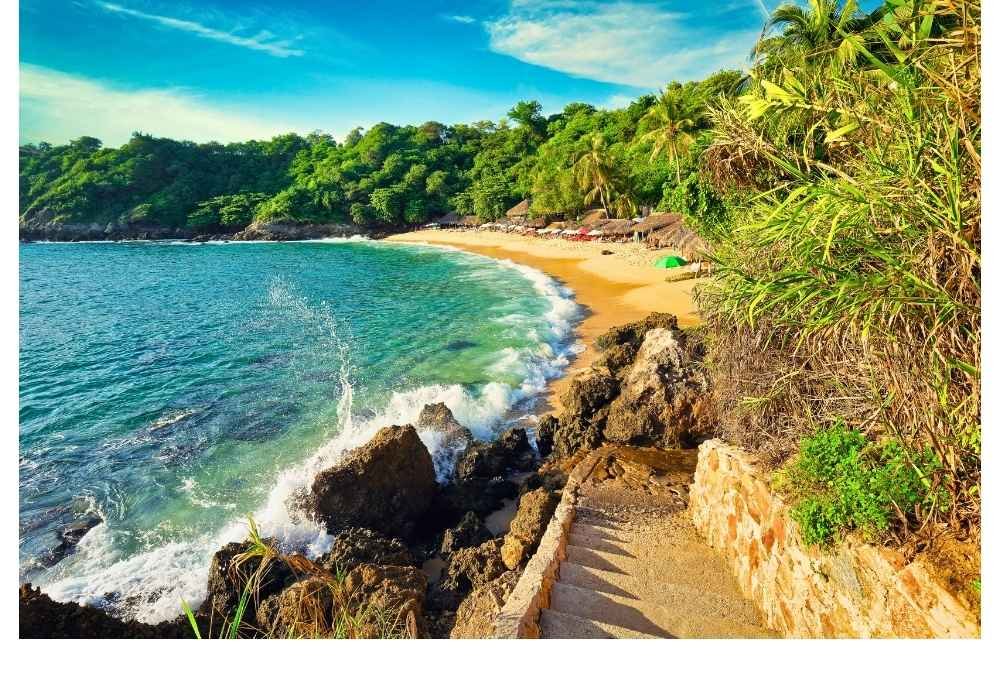
Tucked along the Oaxacan coast, Puerto Escondido is a bohemian beach town that feels untouched by mass tourism. Its laid-back vibe and natural beauty have attracted surfers, artists, and retirees alike, drawn to its cheap cost of living and easy-going lifestyle. The tranquil Zicatela Beach offers world-class surf, while the nearby Laguna de Manialtepec provides a serene environment perfect for birdwatching and sunset cruises. As you watch the sky shift from fiery oranges to calm blues, Puerto Escondido paints a picture of simplicity and peace.
For retirees, Puerto Escondido’s charm is found in its intimate community and slower pace of life. You’ll find yourself relaxing in a café with views of the Pacific, getting to know the locals, and reveling in the fresh seafood, especially the locally caught tuna and marlin. The cost of living here is incredibly low—housing, food, and healthcare are all affordable, with plenty of local markets to visit. What makes Puerto Escondido even more special is the balance of coastal beauty with cultural richness, from its annual Festival of the Sea to the Playa Carrizalillo, a small beach cove ideal for relaxing or swimming.
Key Practical Information
- Peak Season: From December to April, offering dry weather and vibrant local festivals.
- Off-Peak Season: May to November, warmer temperatures and occasional rain.
- Best Ways to Reach: Fly into Puerto Escondido International Airport or take a bus from Oaxaca City (approximately 6-8 hours).
- Ideal Duration of Visit: At least 1 week, but 2 weeks would allow you to enjoy nearby beaches and hidden spots.
- Must-try Local Experiences: Try the local tacos de pescado, visit Laguna de Manialtepec for bioluminescence at night, and explore Playa Carrizalillo.
- Budget Considerations: Monthly living costs can be around $800-$1,000 for a comfortable lifestyle.
- Cultural Etiquette Tips: Spanish is widely spoken; locals appreciate when visitors make an effort to speak basic phrases. Avoid being overly loud, especially during siesta hours.
- Photography Opportunities: Capture the vibrant sunsets at Zicatela Beach, the bioluminescent glow of Laguna Manialtepec, and colorful fishing boats.
3. Sihanoukville, Cambodia

Located on Cambodia’s southern coast, Sihanoukville offers retirees an affordable, yet captivating escape. With pristine beaches and a blend of Khmer and modern influences, this coastal gem is increasingly popular with expats looking for a budget-friendly retreat. Unlike more tourist-heavy regions, Sihanoukville remains relatively low-key, providing a sense of authenticity while still offering enough amenities to live comfortably. The nearby Koh Rong Islands are a paradise for nature lovers, where crystal-clear waters and white-sand beaches await.
The town itself has a relaxed charm, with beach bars, seafood shacks, and a scattering of cultural landmarks, such as the Wat Leu Temple, perched on a hill offering sweeping views of the coastline. For retirees looking to stay active, the region offers a variety of outdoor activities, from swimming in the Gulf of Thailand to exploring the Ream National Park. Life here feels simple, yet fulfilling, where the sense of community and budget-friendly lifestyle truly shines.
Key Practical Information
- Peak Season: November to April, perfect for beach lovers with warm, dry weather.
- Off-Peak Season: May to October, hotter and wetter, but offers less crowded beaches.
- Best Ways to Reach: Fly into Sihanoukville International Airport, or take a bus or train from Phnom Penh (about 4-5 hours).
- Ideal Duration of Visit: A stay of 2-3 weeks to enjoy both the town and nearby islands.
- Must-try Local Experiences: Visit Koh Rong for stunning beaches, enjoy seafood at the local markets, and take a boat trip through Ream National Park.
- Budget Considerations: Rent costs around $200-$400/month, with food and transport adding minimal costs.
- Cultural Etiquette Tips: Dress modestly when visiting temples, and be mindful of local customs like showing respect with a slight bow or nod of the head.
- Photography Opportunities: Snap stunning shots of sunsets over Otres Beach, the bright blue waters of Koh Rong, and the green hills around Ream National Park.
4. Manta, Ecuador

Located on the Pacific coast of Ecuador, Manta offers retirees an affordable coastal lifestyle with an ideal balance of urban amenities and laid-back charm. Its beaches stretch for miles, perfect for those who enjoy morning walks along the shore or afternoon beachside lounging. While the city has a thriving fishing industry, it’s also home to a growing expat community who find both cultural diversity and warmth in the town. The Malecon (seaside promenade) provides a peaceful space to watch fishing boats come and go, while small local markets offer fresh produce and handmade crafts.
For those seeking a more urban setting with beach access, Manta is an excellent choice. The city is home to a lively cultural scene, with music festivals, art galleries, and historical sites like Museo Cancebi showcasing Ecuador’s rich history. The low cost of living, affordable healthcare, and ample opportunities to engage with nature make it an appealing option for retirees. Whether it’s visiting Montecristi for hand-woven hats or relaxing by the serene beaches, Manta provides a fulfilling experience at an affordable price.
Key Practical Information
- Peak Season: December to April, with warm weather and lively beach activities.
- Off-Peak Season: May to November, cooler temperatures and occasional rainfall, but still very pleasant.
- Best Ways to Reach: Fly into Eloy Alfaro International Airport or take a bus from Guayaquil (3-4 hours).
- Ideal Duration of Visit: A visit of 1-2 weeks to explore the city and surrounding beaches.
- Must-try Local Experiences: Take a boat trip to Isla de la Plata, visit Montecristi for artisan crafts, and savor ceviche by the sea.
- Budget Considerations: Monthly living costs are typically under $1,000, including rent, food, and transportation.
- Cultural Etiquette Tips: In Ecuador, it’s customary to greet people with a handshake or kiss on the cheek. Be polite and open when engaging with locals.
- Photography Opportunities: Capture stunning beach landscapes at Murciélago Beach, fishing boats along the Malecon, and the vibrant artisanal markets.
5. Dumaguete, Philippines
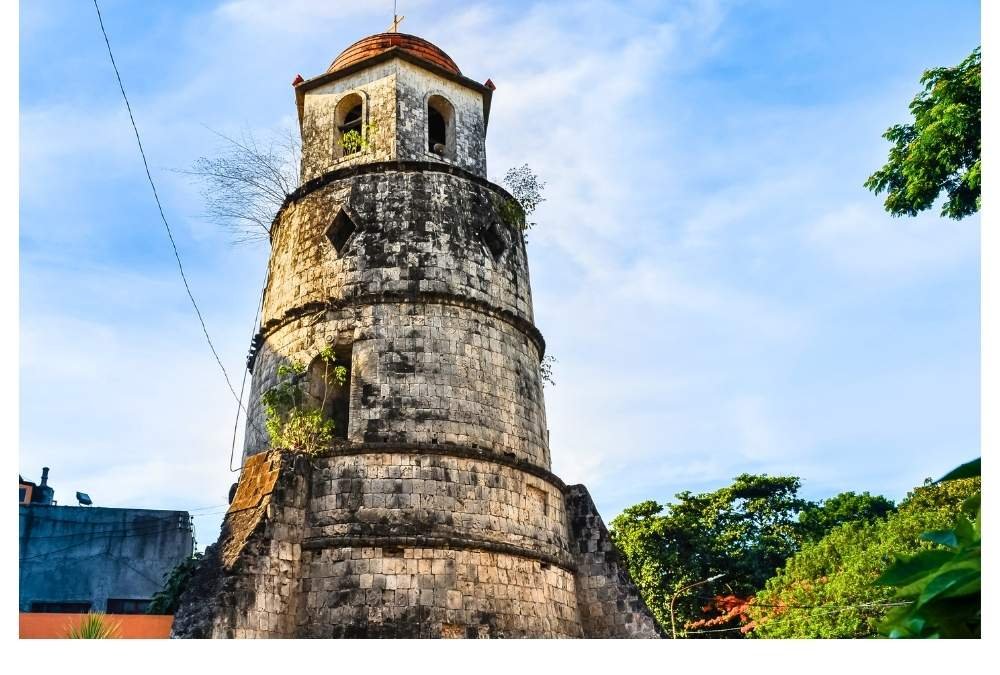
Often referred to as the “City of Gentle People,” Dumaguete in the Philippines is a coastal haven that offers a relaxed pace of life with a welcoming community. Located on the island of Negros Oriental, Dumaguete is famous for its lush natural surroundings, warm-hearted locals, and rich culture. Retirees can enjoy affordable living in an environment where the beauty of nature meets modern-day conveniences. Whether you’re strolling through the charming Rizal Boulevard during sunset or relaxing in a hammock overlooking the sea, Dumaguete’s tranquility is undeniable.
The city is known for its rich educational institutions, including Silliman University, which fosters a youthful energy amidst the peaceful atmosphere. Expats here appreciate the ease of communication (many speak English), the inexpensive healthcare, and the ability to immerse themselves in the island’s natural wonders, like the Apo Island marine sanctuary and Casaroro Falls. Dumaguete has successfully maintained its charm without feeling overcrowded, making it a perfect choice for retirees looking for a balance between culture and leisure.
Key Practical Information
- Peak Season: December to May, offering dry weather and ideal beach conditions.
- Off-Peak Season: June to November, with occasional rains but still a pleasant stay.
- Best Ways to Reach: Fly into Dumaguete Airport or take a ferry from Cebu City (about 4 hours).
- Ideal Duration of Visit: 1-2 weeks to explore the city, beaches, and natural wonders.
- Must-try Local Experiences: Visit Apo Island, explore Casaroro Falls, and try Suman (sticky rice) from local vendors.
- Budget Considerations: Monthly living costs are about $800-$1,000, making it one of the most affordable places for expats.
- Cultural Etiquette Tips: A friendly handshake is common; make sure to respect local customs and greetings.
- Photography Opportunities: Capture the beauty of Rizal Boulevard at sunset, the underwater paradise around Apo Island, and serene Casaroro Falls.
6. Granada (Lake Nicaragua Coast), Nicaragua
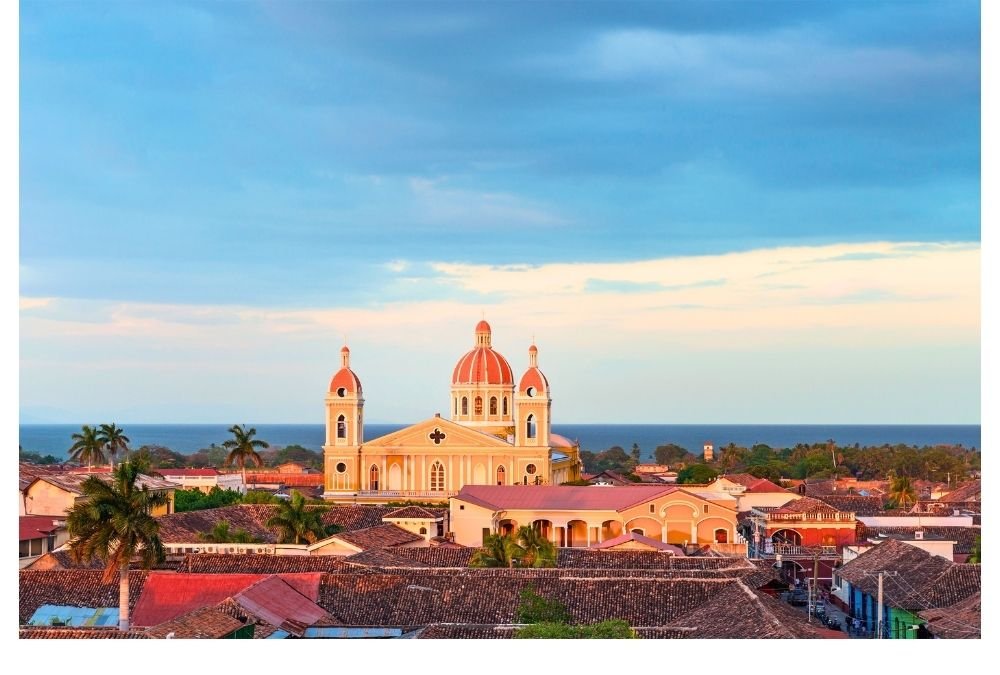
Granada is the colonial gem you never expected to find on Lake Nicaragua’s southern shore. This vibrant city bursts with color, from the pastel-hued buildings lining cobblestone streets to the lush greenery that encircles the area. Known for its tranquil lakeside ambiance, Granada is perfect for retirees who yearn for a slower pace of life while surrounded by beauty. What truly sets this place apart is its proximity to Isla de Ometepe, an island formed by two towering volcanoes, making it an ideal spot for retirees looking to merge lakeside living with adventure.
In Granada, life revolves around its historic center, where you can enjoy leisurely strolls, explore Catedral de Granada, or indulge in local street food. Despite the affordability, the city retains an air of elegance, with boutique hotels and chic cafés peppering the town. It’s easy to fall in love with the warm community here—expats often cite the generosity and hospitality of the Nicaraguan people as a highlight of their experience. And when you’re not wandering the streets, hop on a boat and explore the Las Isletas—over 350 small islands scattered across the lake.
Key Practical Information
- Peak Season: December to April, perfect for warm, dry weather.
- Off-Peak Season: May to November, ideal for fewer crowds, although occasional rain can be expected.
- Best Ways to Reach: Fly into Augusto C. Sandino International Airport in Managua and take a 1.5-hour drive or bus to Granada.
- Ideal Duration of Visit: Spend 1-2 weeks to explore the city, islands, and nearby volcanoes.
- Must-try Local Experiences: Visit Isla de Ometepe, take a boat tour through Las Isletas, and taste the local dish gallo pinto at a lakeside restaurant.
- Budget Considerations: Rent is generally around $400-$600/month, and local meals can be as cheap as $3-$5.
- Cultural Etiquette Tips: Greet locals with a handshake, and if invited into a home, it’s customary to bring a small gift.
- Photography Opportunities: Capture the historic Catedral de Granada, the colorful streets, and the volcanic landscapes of Isla de Ometepe.
7. Taghazout, Morocco
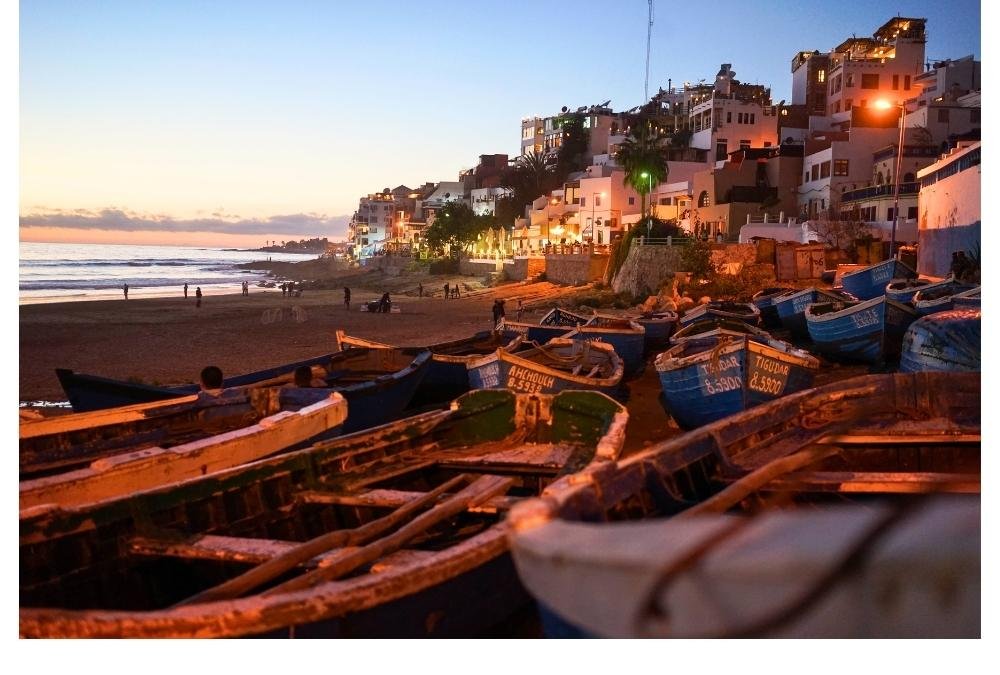
For retirees seeking a hidden Moroccan paradise, Taghazout offers a mix of traditional charm and surf-town appeal, where the Atlantic Ocean meets sandy beaches and laid-back vibes. Known for its surf culture, this once-sleepy fishing village has evolved into a charming, low-key coastal haven that’s perfect for those who want to retire near the sea without the noise of major tourist hubs. The long stretch of Taghazout Beach provides endless opportunities for surfing, while the Anti-Atlas Mountains offer serene hikes and picturesque views.
What makes Taghazout truly special, however, is its distinctive Moroccan essence, which combines the scent of spices in the air with the sound of ocean waves crashing on the shore. As a retiree here, you can dive into the local culture, enjoying meals at traditional tagines restaurants, exploring bustling souks, or practicing yoga on one of the many rooftop terraces overlooking the sea. The town is known for its slow pace of life, allowing you to indulge in your hobbies—whether that’s surfing, reading, or enjoying a cup of mint tea while watching the sunset.
Key Practical Information
- Peak Season: March to October, offering sunny weather perfect for beach activities and surfing.
- Off-Peak Season: November to February, cooler temperatures with fewer tourists, ideal for a quiet retreat.
- Best Ways to Reach: Fly into Agadir Al Massira Airport and take a 40-minute drive to Taghazout.
- Ideal Duration of Visit: Spend at least 1-2 weeks to explore the beach, mountains, and surrounding villages.
- Must-try Local Experiences: Surfing at Taghazout Beach, hiking in the Anti-Atlas Mountains, and visiting a local argan oil cooperative.
- Budget Considerations: Monthly living costs range from $800 to $1,100, with affordable housing and local food options.
- Cultural Etiquette Tips: Modesty is important in Morocco, especially when visiting mosques or public places. Always ask for permission before taking photographs of locals.
- Photography Opportunities: Capture the golden beaches, surf culture at sunrise, and vibrant markets selling traditional Moroccan goods.
8. Vung Tau, Vietnam

Vung Tau might not have the same international recognition as Ho Chi Minh City, but it boasts a unique coastal appeal that makes it perfect for retirees seeking a relaxed, beach-town lifestyle. Just a two-hour drive from Saigon, this charming city offers a wonderful blend of beach resorts, lively markets, and cultural landmarks. Vung Tau’s long coastline offers beautiful beaches like Back Beach and Front Beach, which are less crowded than other tourist hotspots in Vietnam. Here, you’ll feel as though you’ve discovered a hidden gem where every day feels like a vacation.
What makes Vung Tau particularly attractive to retirees is its mix of modern comforts with traditional Vietnamese culture. In the mornings, you can stroll through the bustling Vung Tau Market or enjoy the peaceful ambiance of the Statue of Christ the King atop Núi Nhỏ (Small Mountain). The cost of living in Vung Tau is extremely low, making it a viable option for retirees looking to live by the sea on a modest budget. From savoring fresh seafood to exploring nearby islands like Long Son, Vung Tau offers endless opportunities to connect with nature and Vietnamese culture.
Key Practical Information
- Peak Season: December to April, sunny weather ideal for beach activities.
- Off-Peak Season: May to November, cooler temperatures but higher rainfall.
- Best Ways to Reach: Fly into Tan Son Nhat International Airport in Ho Chi Minh City and take a bus or taxi to Vung Tau (about 2 hours).
- Ideal Duration of Visit: Spend a week to explore the beaches and nearby islands.
- Must-try Local Experiences: Visit the Statue of Christ the King, explore Vung Tau Market, and enjoy fresh seafood by the beach.
- Budget Considerations: Rent averages around $300-$500/month, and street food costs as little as $1.
- Cultural Etiquette Tips: Be respectful in religious sites and always remove shoes when entering temples.
- Photography Opportunities: Capture the stunning beaches, vibrant street scenes, and panoramic views from Núi Nhỏ.
9. Las Tablas, Panama
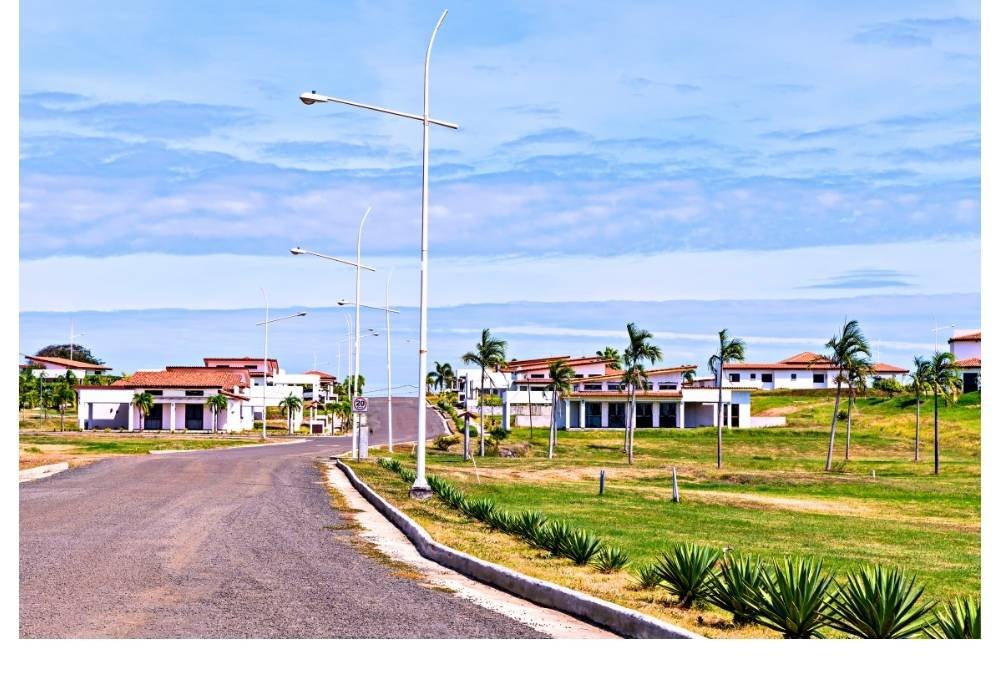
If you’re looking for a place to retire that feels like a hidden gem but with easy access to all the conveniences of modern life, Las Tablas, Panama, may be your dream destination. Located on the Azuero Peninsula, this small town offers an authentic Panama experience, with a slower pace of life and affordable living. Known for its cultural heritage, Las Tablas hosts one of the most vibrant Carnival celebrations in the country, filled with parades, music, and traditional dances, making it the ideal destination for those looking to immerse themselves in local culture.
Life in Las Tablas is centered around community and simplicity. The local farmers’ market is a great place to sample fresh produce and meats, while the nearby beaches offer peaceful retreats where retirees can relax by the water. The cost of living is incredibly low—think $400-$600 for rent, with plenty of options for local dining. For retirees looking for a perfect blend of rural charm and beach access, Las Tablas has a relaxed vibe that invites exploration.
Key Practical Information
- Peak Season: December to April, offering dry weather ideal for beach activities and exploring the town.
- Off-Peak Season: May to November, warmer with occasional rain, ideal for quieter moments.
- Best Ways to Reach: Fly into Tocumen International Airport in Panama City, then take a 4-hour bus ride or drive to Las Tablas.
- Ideal Duration of Visit: 1-2 weeks to enjoy the beaches, markets, and local culture.
- Must-try Local Experiences: Attend Carnival, explore nearby Playa Venao, and sample local sancocho (Panamanian chicken soup).
- Budget Considerations: Rent is about $300-$600/month, and meals at local eateries cost around $3-$5.
- Cultural Etiquette Tips: Panama is a friendly country, and a simple handshake or “Buenos días” (Good morning) goes a long way.
- Photography Opportunities: Capture the lively Carnival celebrations, the peaceful beaches of Playa Venao, and the vibrant town streets.
10. Colón, Honduras (Bay Islands)

For retirees seeking a secluded paradise with plenty of natural beauty, Colón offers a slice of Honduras that’s still relatively untouched by mainstream tourism. Located on the Caribbean coast, Colón is part of the Bay Islands and serves as a gateway to some of the best diving spots in the world. Its beaches, like West Bay Beach, are pristine and uncrowded, providing an intimate coastal experience with lush jungles and crystal-clear waters. The region is also known for its marine life, making it ideal for diving enthusiasts.
What truly sets Colón apart is its affordability and authenticity. While most tourists head to Roatán, Colón offers an opportunity to experience life in a quieter, more rural setting without sacrificing comfort. The towns here are small, but the community is incredibly welcoming, and it’s not hard to find local expats who will make you feel right at home. Whether you’re exploring the island’s natural beauty or engaging with the rich Garifuna culture, Colón offers a sense of adventure with a low-cost lifestyle.
Key Practical Information
- Peak Season: December to April, ideal for beach lovers and diving enthusiasts.
- Off-Peak Season: May to November, offers fewer tourists and mild weather.
- Best Ways to Reach: Fly into Juan Manuel Gálvez International Airport on Roatán and take a ferry to Colón (about 1-2 hours).
- Ideal Duration of Visit: Spend 1-2 weeks to experience the island life and explore the surrounding waters.
- Must-try Local Experiences: Snorkel or dive at West Bay Beach, visit the Garifuna village for cultural immersion, and enjoy fresh seafood.
- Budget Considerations: Rent can be as low as $300-$500/month, and meals cost about $5-$8.
- Cultural Etiquette Tips: Respect local traditions, especially the Garifuna culture, and be mindful of the laid-back pace of life.
- Photography Opportunities: Capture the breathtaking West Bay Beach, underwater shots of vibrant marine life, and the colorful Garifuna villages.
11. Zihuatanejo, Mexico
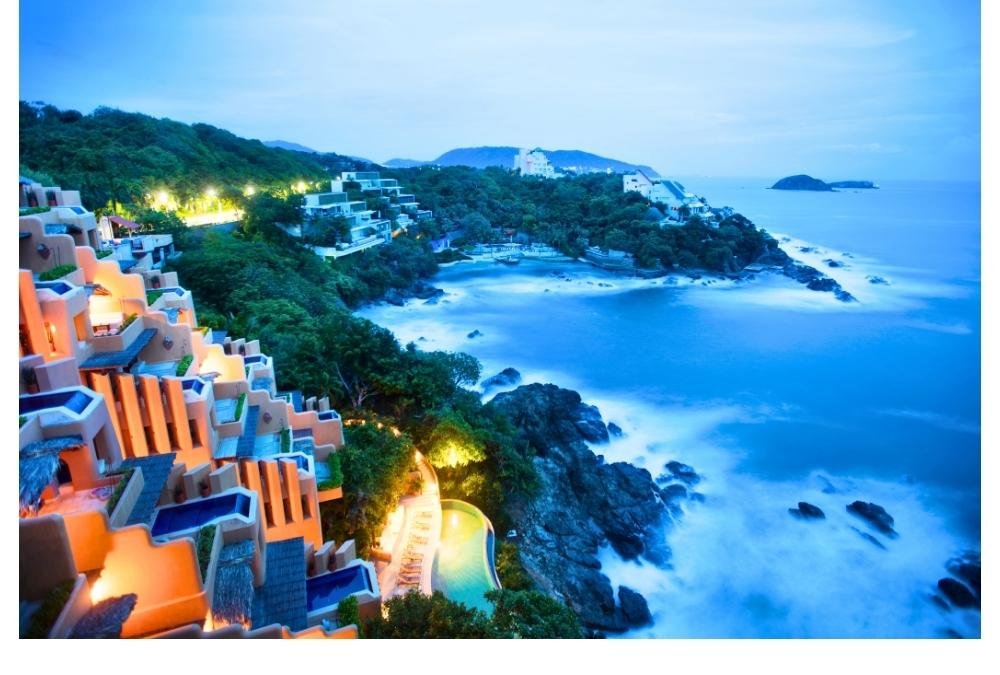
Zihuatanejo is the coastal town that brings you a sense of nostalgia for simpler days. Nestled along Mexico’s Pacific coast, Zihuatanejo remains a charming fishing village that effortlessly combines beauty with tranquility. Retirees here can enjoy a low-key lifestyle with spectacular beaches like Playa La Ropa and the bustling Zihuatanejo Bay, where the turquoise waters invite you to indulge in water activities or just relax on the shore. The town itself is filled with cobbled streets, vibrant markets, and delicious food, making it feel like you’ve stepped back in time while still being close to modern conveniences.
What makes Zihuatanejo stand out is the community feel—it’s one of those places where you’re likely to know your neighbors within days of moving in. Zihuatanejo has a much more relaxed, understated vibe than other coastal towns, perfect for retirees who want to settle down and embrace a slower pace of life. Whether you’re taking a walk to the Margarita Market to buy fresh fruit or savoring local seafood at El Galeón, you’ll soon find that the best parts of life here are in the small moments.
Key Practical Information
- Peak Season: November to April, sunny and dry, perfect for exploring beaches.
- Off-Peak Season: May to October, warmer with possible rain, ideal for quieter visits.
- Best Ways to Reach: Fly into Ixtapa-Zihuatanejo International Airport and take a short drive to Zihuatanejo.
- Ideal Duration of Visit: Spend 1-2 weeks enjoying the beaches and town’s vibrant markets.
- Must-try Local Experiences: Try fresh tacos de pescado, visit the bustling Margarita Market, and enjoy a boat ride around the bay.
- Budget Considerations: Rent can range from $300-$600/month, and local food is typically $4-$6 per meal.
- Cultural Etiquette Tips: Mexicans are friendly and open—greeting locals with a friendly “Buenos días” is appreciated.
- Photography Opportunities: Capture the serene beauty of Playa La Ropa, colorful local markets, and the pristine waters of Zihuatanejo Bay.
12. Trujillo, Peru
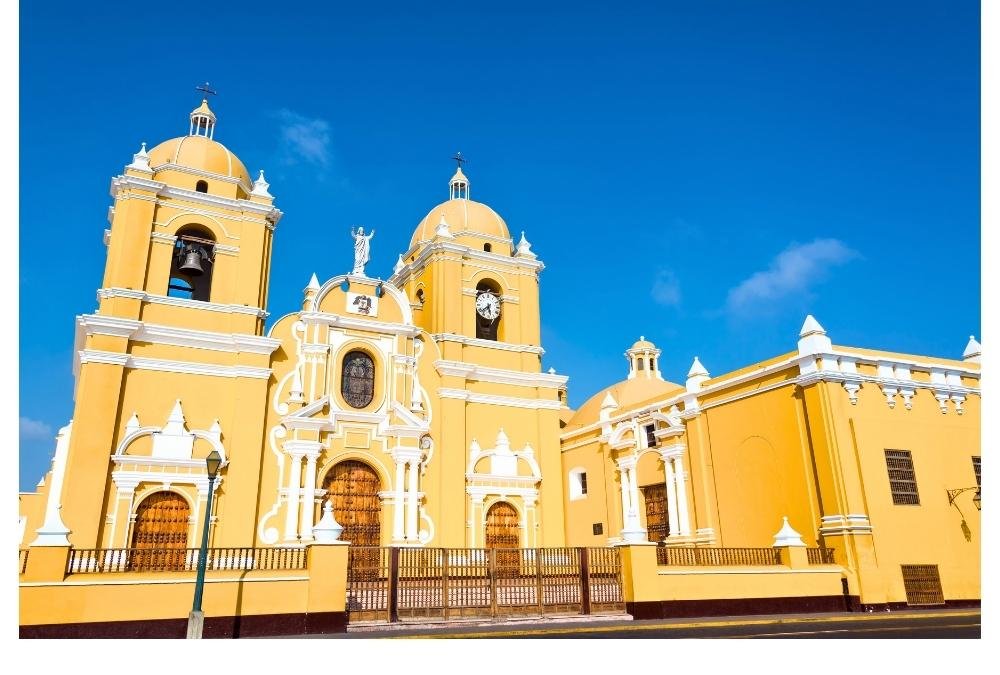
For retirees seeking history, adventure, and scenic coastlines without the heavy tourist crowds, Trujillo, Peru, provides an excellent balance. This charming city sits near Huanchaco, a beach town famous for its reed boats and surfing waves. Trujillo itself boasts impressive archaeological sites such as the ancient Chan Chan ruins, the largest adobe city in the world, and Huacas del Sol y la Luna, where you can wander through temples and ancient structures, feeling connected to Peru’s rich cultural past.
While Trujillo isn’t on the international radar for tourists as much as Lima or Cusco, it offers retirees a slower-paced, yet culturally enriching lifestyle. The nearby beaches, like Playa de Huanchaco, are perfect for peaceful days spent by the ocean, while Trujillo’s vibrant markets and traditional festivals add excitement to daily life. Whether you’re savoring fresh seafood at local beachside restaurants or exploring ancient ruins, Trujillo offers a lifestyle full of discovery without the crowds.
Key Practical Information
- Peak Season: December to March, ideal for warm weather and surfing.
- Off-Peak Season: April to November, cooler but still pleasant for exploring.
- Best Ways to Reach: Fly into Carlos Martínez de Pinillos International Airport in Trujillo, or take a bus from Lima (9 hours).
- Ideal Duration of Visit: Spend 1-2 weeks enjoying the beaches, ruins, and local markets.
- Must-try Local Experiences: Visit Chan Chan, try ceviche at Huanchaco, and explore the vibrant Trujillo markets.
- Budget Considerations: Monthly living expenses are generally under $800, with affordable rent and food.
- Cultural Etiquette Tips: A polite handshake is customary, and always ask before taking photos of locals.
- Photography Opportunities: Capture the ancient ruins of Chan Chan, the waves at Huanchaco, and the bustling streets of Trujillo.






